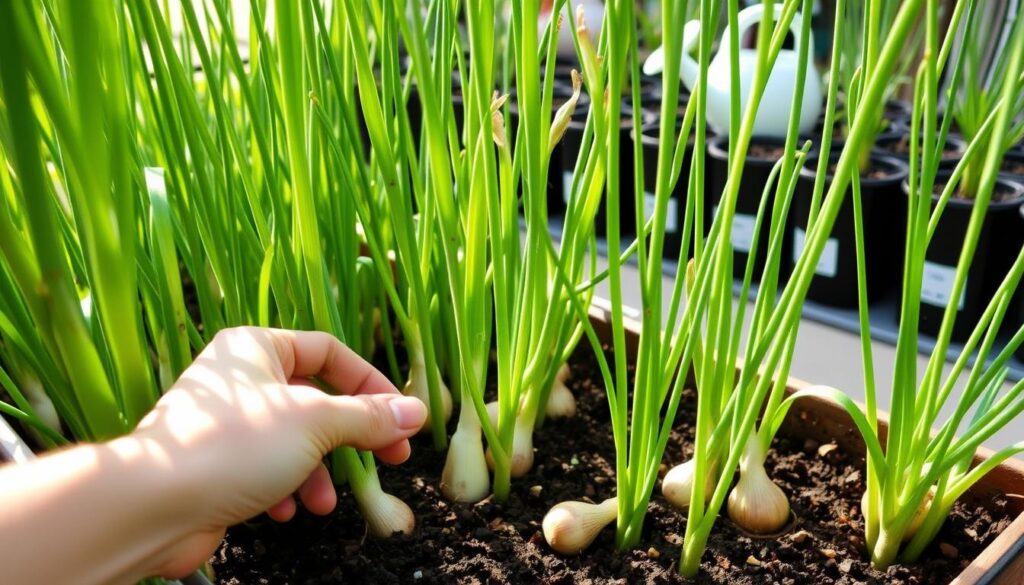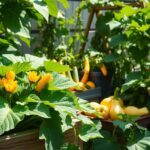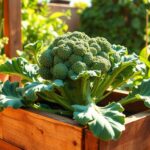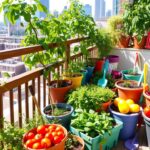Have you ever wondered if you can enjoy fresh, homegrown onions without a traditional garden? The answer is a resounding yes! With just a pot, some soil, and a little effort, you can cultivate your own onions right at home. Whether you’re a seasoned gardener or a beginner, this guide will walk you through every step to ensure success.
Onions are versatile and relatively easy to grow, making them a great addition to any home garden. Even if you’re short on space, a container can be the perfect solution. I’ve personally grown red, yellow, and white varieties on my porch with fantastic results. The key is choosing the right pot—at least 10 inches deep—and ensuring your plants get plenty of sunlight.
Timing is also crucial. Planting in the spring sets the stage for a bountiful harvest. This guide will cover everything from selecting the right container to curing your onions for long-term storage. Ready to get started? Let’s dive in!
Key Takeaways
- Onions can thrive in containers with proper care and sunlight.
- Choose a pot that’s at least 10 inches deep for optimal growth.
- Spring is the ideal time to plant for a successful harvest.
- Consistent soil moisture and fertilization are essential.
- Curing onions after harvest ensures long-term storage.
Understanding Container Requirements for Onions
Starting your container garden with onions? Let’s explore the essentials for success. Whether you’re using seeds or transplants, the right setup ensures healthy growth and a bountiful harvest. Let’s dive into the key factors: container selection, soil quality, sunlight, and watering.
Choosing the Right Container and Soil
Selecting the proper container is the first step. Onions need space to develop their bulbs, so choose a pot that’s at least 10 inches deep and 8 inches in diameter per plant. For multiple plants, allocate 3 inches of space across for each one. A five-gallon container can comfortably hold 6 to 8 plants.
Soil quality is equally important. A mix of two-thirds potting soil and one-third organic compost provides the nutrients onions need. This combination ensures proper drainage while retaining moisture. Avoid heavy soils that can lead to waterlogging and root rot.
Optimal Sunlight and Watering Needs
Onions thrive in full sun, requiring at least 10-16 hours of light daily, depending on the variety. Long-day onions, ideal for northern regions, need 14-16 hours. Short-day varieties, suited for southern areas, require 10-12 hours. Day-neutral onions, perfect for central zones, thrive with 12-14 hours.
Watering is another critical factor. Onions need consistent moisture but dislike soggy soil. Aim for 1 to 2 inches of water per week, adjusting based on weather conditions. Always check the top inch of soil—if it’s dry, it’s time to water. Overwatering can lead to root rot, so ensure your container has proper drainage holes.
| Requirement | Details |
|---|---|
| Container Depth | Minimum 10 inches deep |
| Soil Mix | 2/3 potting soil, 1/3 compost |
| Sunlight | 10-16 hours daily |
| Watering | 1-2 inches per week |
By meeting these requirements, you’ll create the perfect environment for your onions to flourish. Next, we’ll explore planting techniques and care tips to maximize your harvest.
Expert Tips for growing onion sets in containers
Mastering the art of cultivating onions in limited space can be incredibly rewarding. With the right techniques, you can enjoy a bountiful harvest even in a small pot. Let’s dive into the essential tips for success.
Planting Depth, Spacing, and Timing
Proper planting depth and spacing are crucial for healthy bulb development. Plant your sets 2-3 inches deep and space them 4-5 inches apart. This ensures each plant has enough room to grow without competing for nutrients.
Timing is equally important. I’ve found that planting in the spring, when the soil temperature reaches around 60°F, yields the best results. This gives the plants ample time to mature before the summer heat sets in.
Fertilizer Choices and Growth Enhancers
Feeding your plants regularly is key to robust growth. I recommend using an organic fertilizer every 2-3 weeks during the growing season. This provides the nutrients needed for larger, healthier bulbs.
For an extra boost, consider adding compost or worm castings to the soil. These natural enhancers improve soil structure and promote root development. Monitoring moisture levels is also essential—aim for 1-2 inches of water per week to keep the soil consistently moist.
- Plant sets 2-3 inches deep and 4-5 inches apart for optimal growth.
- Start planting in spring when soil temperatures reach 60°F.
- Use organic fertilizers every 2-3 weeks for nutrient-rich soil.
- Add compost or worm castings to enhance soil quality.
- Water consistently, providing 1-2 inches per week.
By following these expert tips, you’ll create the perfect environment for your plants to thrive. Whether you’re a seasoned gardener or just starting, these strategies will help you achieve a successful harvest.
Troubleshooting Common Challenges in Container Onion Gardening
Facing challenges while nurturing onions in pots? Here’s how to overcome them. Even with the best care, issues like overwatering, pests, and improper harvesting can arise. Let’s explore practical solutions to ensure your plants thrive.
Preventing Overwatering and Root Rot
Overwatering is a common mistake. It can lead to root rot, a fungal issue that damages the root system. To avoid this, check the soil moisture by inserting your finger up to the first knuckle. If the top inch feels dry, it’s time to water.
Ensure your container has proper drainage holes. Use a well-draining soil mix to prevent waterlogging. Overhead watering can also promote fungal growth, so water at the base of the plant instead.

Identifying and Managing Pests
Pests like onion maggots and thrips can harm your crop. Look for signs such as yellowing leaves or stunted growth. To manage these issues, use row cover cloths to protect your plants.
For severe infestations, consider organic solutions like neem oil. Regularly inspect your plants to catch problems early. Healthy plants are less likely to attract pests, so maintain proper watering and fertilization.
Harvesting, Curing, and Storage Tips
Harvesting at the right time is crucial. When the tops begin to yellow and fall over, it’s a sign your onions are ready. Gently lift them from the soil, being careful not to damage the bulb.
Curing is essential for long-term storage. Place your onions in a well-ventilated, dry area for 2-3 weeks. Once cured, trim the tops and store them in a cool, dark place. Avoid leaving onions in the ground too long, as this can reduce their storage life.
| Challenge | Solution |
|---|---|
| Overwatering | Check soil moisture; ensure proper drainage |
| Pests | Use row covers or organic treatments |
| Harvesting | Wait for tops to yellow; cure for 2-3 weeks |
Conclusion
Growing your own onions at home can be a rewarding experience, even with limited space. By choosing the right container and ensuring proper soil conditions, you can cultivate healthy bulbs with ease. Remember to monitor water levels and provide ample sunlight for optimal growth.
Harvesting at the right time is crucial. When the tops yellow and fall over, your onions are ready. After pulling them, cure them in a dry, ventilated area for 2-3 weeks to ensure long-term storage. This step is essential for preserving their flavor and texture.
As a gardener, I’ve learned that small adjustments, like experimenting with different varieties, can significantly improve yields. Whether you’re planting in summer or fall, following these proven methods will lead to a fruitful harvest.
With the right care and attention, anyone can succeed in this endeavor. Start small, learn from each season, and enjoy the process of nurturing your own fresh produce.




